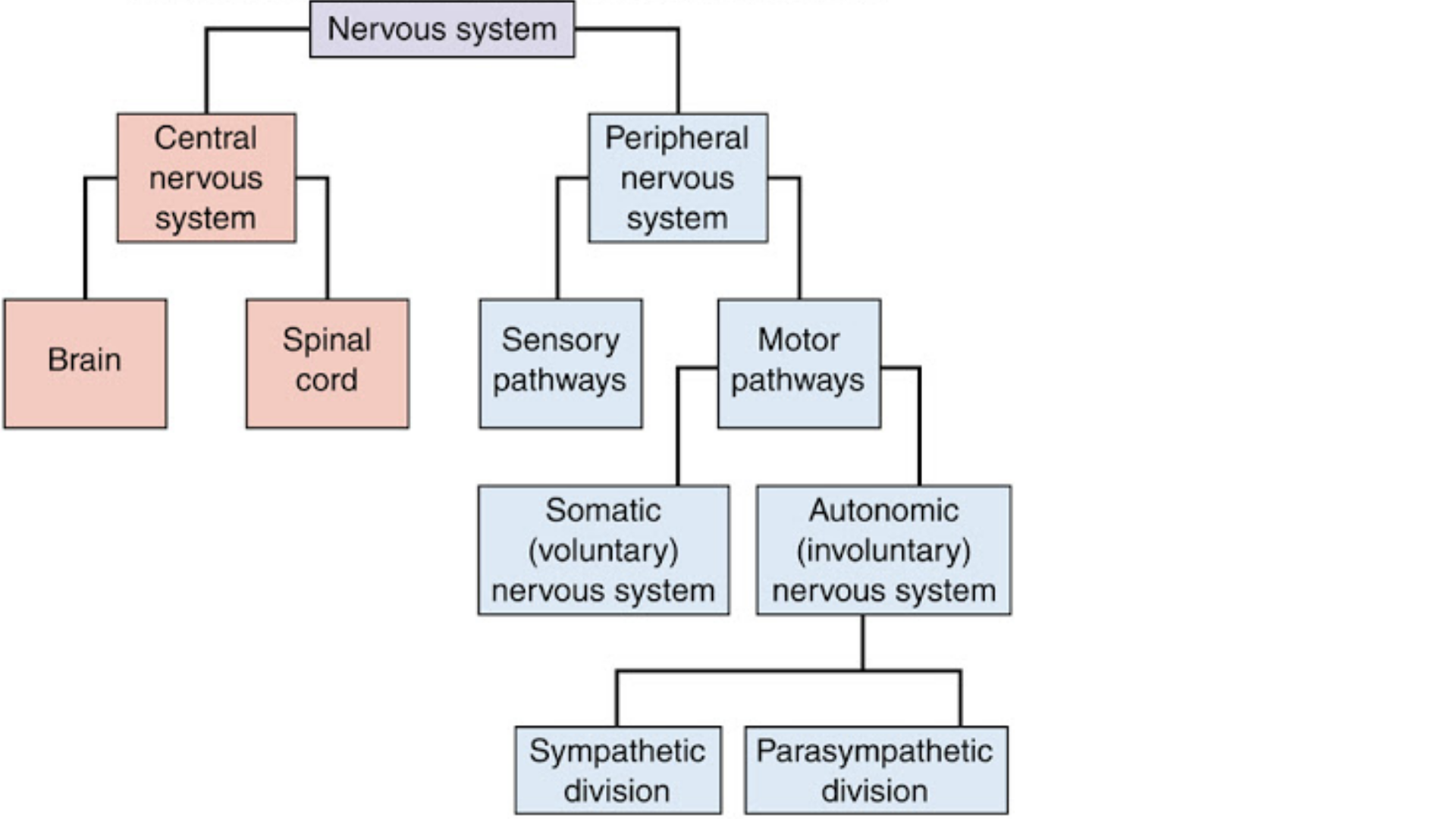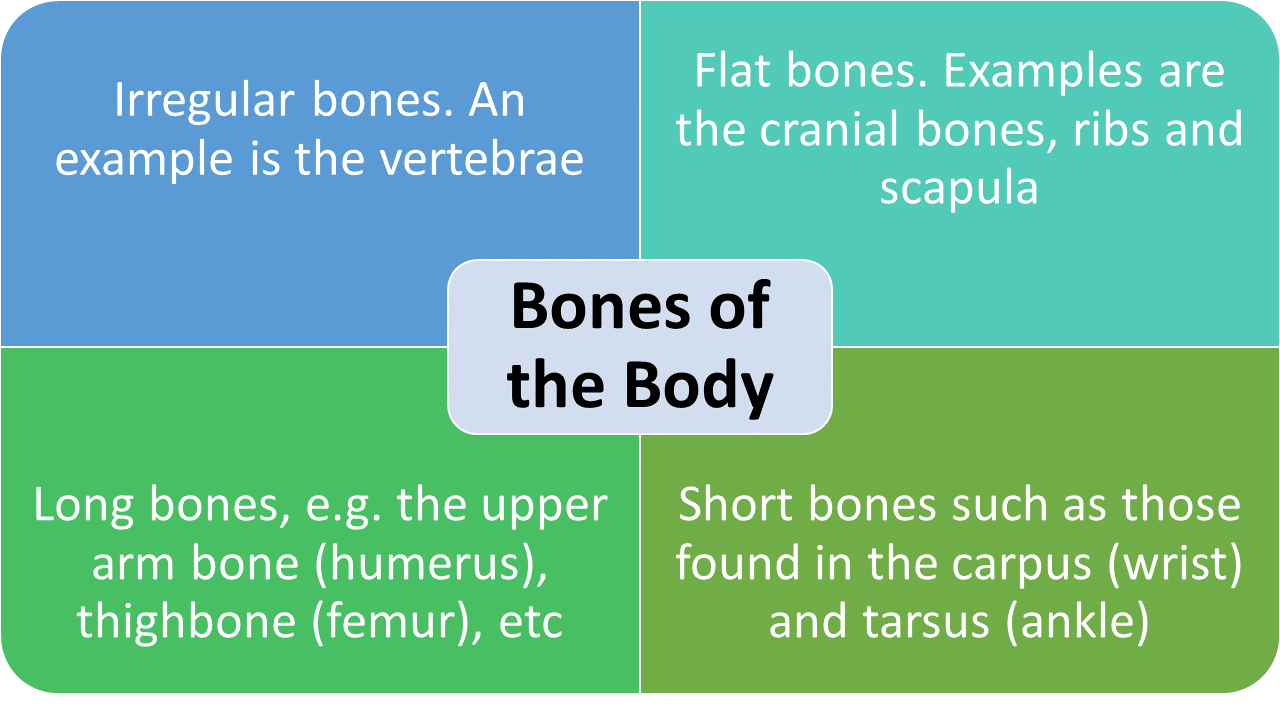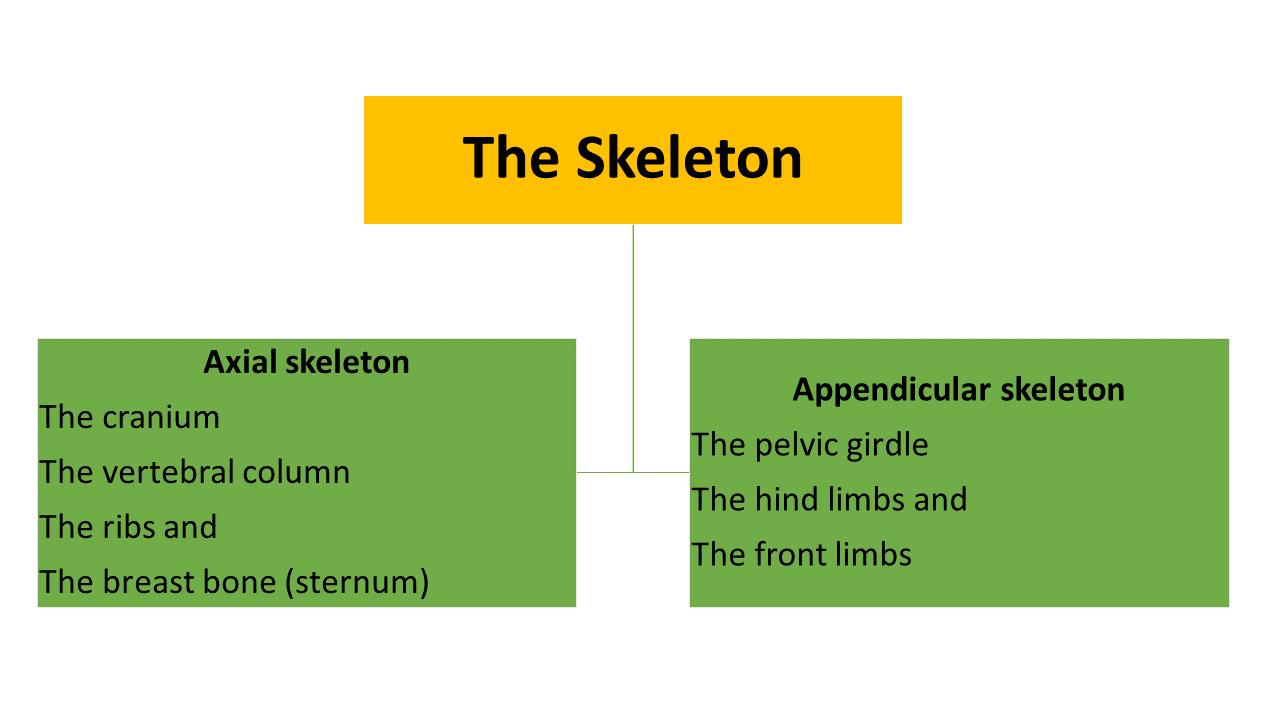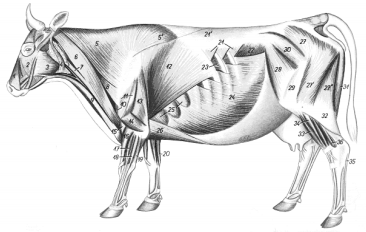
Click here to view a video that explains the different animal systems
This Session describes the processes involved within the various anatomical systems of the body, the interaction of the various systems of the body with each other, the biochemical substances that are produced within each of the systems and their purpose.
All activities taking place in living organisms are aimed at growth and reproduction. In order to grow the animal needs energy. The source of energy is food, which must be searched for the animal may supply itself or feed to the animal by its caretaker or parent. To be able to search for food the animal needs a locomotor system and also senses in order to smell, see and hear. To make the food available to the body it must first be broken down into more elementary substances (e.g. proteins to amino acids, carbohydrates to glucose and fats to fatty acids). The digestive system, which includes all the structures and organs from the mouth to the anus, is necessary for this.
The digestive system removes the useful parts from food and discards the rest. For the absorbed nutrients (amino acids, glucose and fatty acids) to be changed into energy and thus made available to the body it must first undergo a process, which is called metabolism. The liver plays the biggest role in this process. Before energy can be released from nutrients it must first be “burnt” by the body and oxygen is necessary for this. The respiratory system supplies this oxygen to the body. To transport oxygen from the respiratory organs (lungs) to the rest of the body and also for the distribution of nutrients through the body, the circulatory system is necessary.
The circulatory system also transports the waste products of metabolism to organs where it is excreted e.g. the kidneys which is part of the urinary system. To reproduce the animal needs a reproductive system. This complicated system is controlled by the endocrine system, consisting of ductless glands, which secrete their chemicals/fluids called hormones into the bloodstream for distribution to the whole body. When a hormone reaches its target organ, it will have the desired effect on that organ. This is called negative feedback. Production of hormones may be triggered by environmental factors or physiological changes in the animal’s body. The endocrine glands control various involuntary processes in the body e.g. metabolism, growth, digestion, etc.
To synchronise and control all the systems a nervous system is necessary. The nervous system can be divided into two functional parts, namely, that which controls voluntary processes like walking, vision, hearing, smelling, etc. and that which controls the involuntary processes like heart rate, movement of the intestines etc.

A short preview of the anatomy of the different systems of the body will be given in order to know the anatomy of a normal healthy animal. For practical reasons the different systems will be dealt with separately, but it should always be borne in mind that the function of each system is dependent on that of others and that it is really impossible to study one without having a thorough knowledge of the rest.
The Locomotor System
The locomotor system comprises of the skeleton with its joints, which give support to the different bones as well as the muscles and maintains the integrity of the body structure. When the muscles contract and relax under control of the nervous system it causes movement of the body. In addition, there are ligaments in and around joints and tendons, which serve to support and protect the muscles by preventing overstretching.
The Bones of the Body
The bones of the body can be divided into four categories:
- Long bones, e.g. the upper arm bone (humerus), thighbone (femur), etc.
- Flat bones. Examples are the cranial bones, ribs and scapula.
- Short bones such as those found in the carpus (wrist) and tarsus (ankle). These bones serve as shock absorbers.
- Irregular bones. An example is the vertebrae

The Skeleton
The skeleton is a framework of hard structures or bones, which supports and protects soft tissues. It consists of the different bones, cartilage and strictly speaking also ligaments.
Anatomically, the skeleton can be divided into two parts, the Axial skeleton and the Appendicular skeleton.


Mammalian Skeletal Structure
The Muscles of the Body
The muscles of the body can be divided into three groups:
Voluntary striated muscles: These include those of the neck, back and limbs and are under voluntary control i.e. the animal can contract these muscles at will. This is the “meat” of the animal.
Involuntary smooth muscles: This group includes muscles of the intestinal tract, urinary bladder, uterus etc. They are not under voluntary control of the animal, but controlled by the autonomic nervous system. There is also no sense of pain in smooth muscles. An abdominal operation can consequently be done on domestic animals and humans by the use of local anaesthesia only. Involuntary muscles, however, send out an impulse of pain when they are stretched excessively.
Heart (cardiac) muscles (Involuntary muscles): Cardiac muscles are highly specialised muscle tissue, and although cross-striations are visible microscopically, they are involuntary muscles. The muscles also differ from striated muscles in that there are branches between fibres. The following diagram shows the matrix of muscles of a cow. Each number represents a specific muscle.
The Muscles
